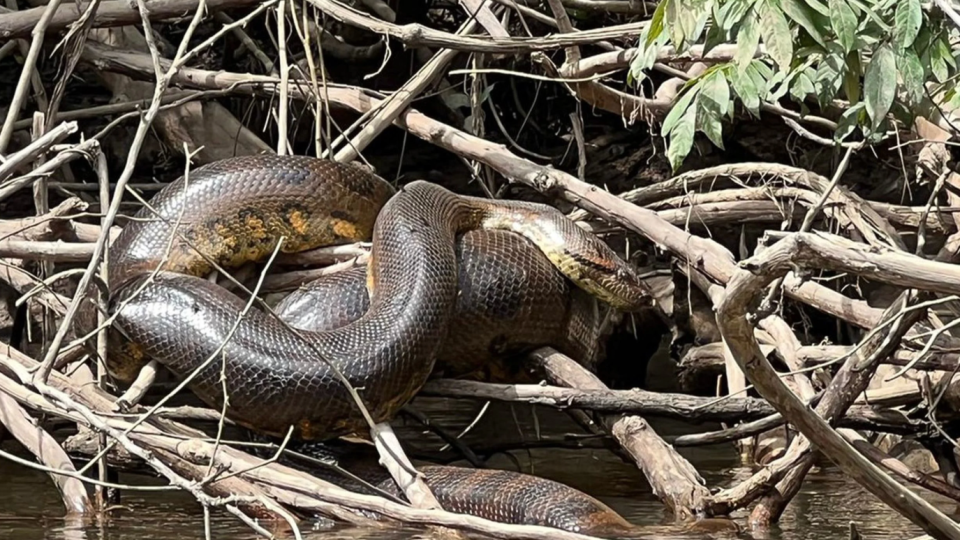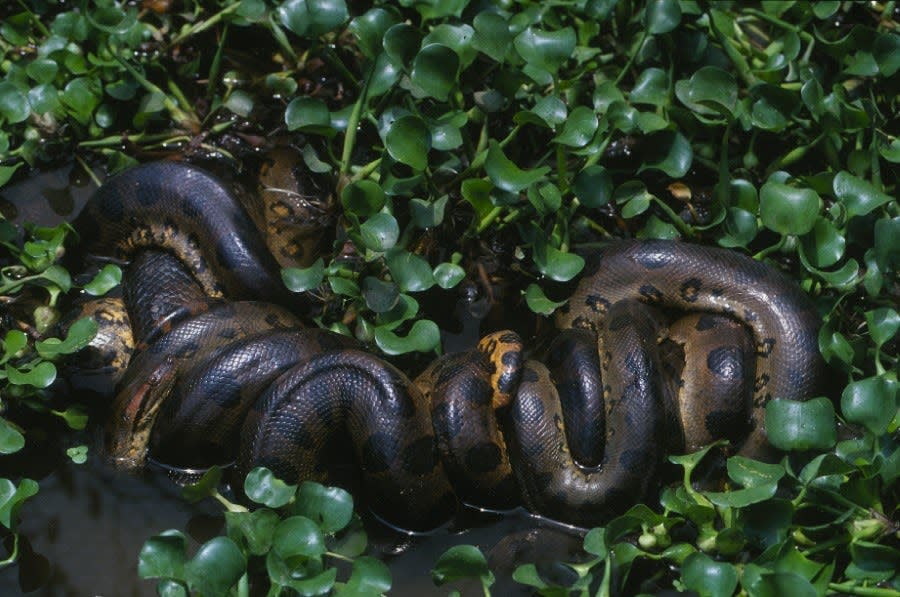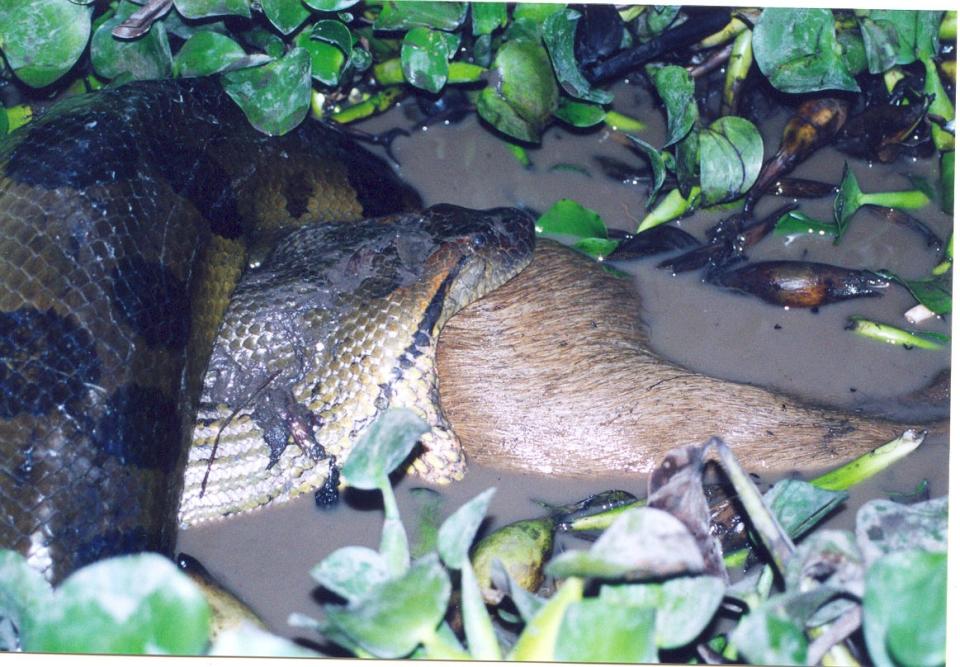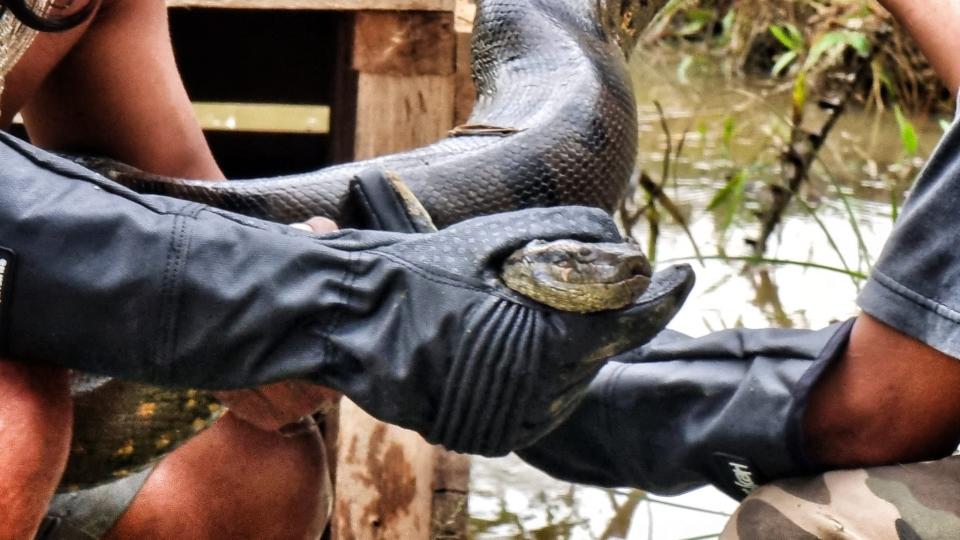New anaconda species said to be largest ever found during filming of Will Smith docuseries
A giant anaconda species thought to be the largest in the world has been captured deep in the Amazon of Ecuador by a team of scientists from The University of Queensland.
The group of scientists, led by professor Bryan Fry, uncovered the nearly 10-million-year-old species with help from the Indigenous Huaorani people while filming "Pole to Pole with Will Smith," a National Geographic series streaming on Disney+ and hosted by the Oscar winner.
“The size of these magnificent creatures was incredible," Fry said in a news release. "One female anaconda we encountered measured an astounding 6.3 meters (20.8 feet) long."

The invitation by Huaorani Chief Penti Baihua to enter the Baihuaeri Huaorani Territory in the Ecuadorian Amazon was "one of only a handful granted since the tribe’s first contact in 1958," Fry told USA TODAY. “Our team received a rare invitation − to explore the region and collect samples from a population of anacondas."
The journey into the jungle

Chief Baihua led Fry's team on a 10-day search for the anacondas, which are considered sacred to the tribe.
The team took canoes downriver in the Bameno region, where they found "several anacondas lurking in the shallows, lying in wait for prey," Fry said.
The group then captured several specimens of the species, which they named the northern green anaconda (Eunectes akayima).
"The key to understanding the discovery is the difference in the geographic range of anaconda species," Fry told USA TODAY.
The Amazon has two separate basins. The larger basin in the south (Brazil, Bolivia, Peru and parts of French Guiana) is home to the green anaconda, from which the northern green anaconda comes. The smaller basin in the north (Colombia, Ecuador, Guyana, Suriname, Trinidad, Venezuela and parts of French Guiana) is home to the newly discovered northern green anaconda.
The two species differ genetically by 5.5%, Fry said. “It’s quite significant – to put it in perspective, humans differ from chimpanzees by only about 2%."
Rumors of larger snakes

“There are anecdotal reports from the Huaorani people of other anacondas in the area measuring more than 7.5 meters long (24.6 feet) and weighing around 500 kilograms (1,102 pounds)," Fry said, sharing with USA TODAY that Chief Baihua's son Marcelo Tepeña Baihua has scars from a snake about that size.
"The scars were clearly from a truly massive snake. They say that one wasn’t even the biggest they’ve ever seen," Fry said. "So it's clear that the snakes in the Huaorani lands are indeed the biggest of all anacondas."
Details on the snakes found have been published in the journal MDPI Diversity.
Future work

Fry says his team's work in the Amazon is far from done. Pollutants such as cadmium and lead have woven their way into "the delicate fabric of this ecosystem as consequences of the frequent oil spills plaguing the Yasuni Amazon," Fry said.
Fry's team hopes to keep an eye on the reproduction of the northern green anaconda to gain greater insight into the health of the ecosystem at large.
"Our future expeditions will focus on the collection and analysis of soil, water and biological samples, employing cutting-edge techniques to trace the pathways of these contaminants," Fry said. "By understanding how these metals affect the endocrine systems of the Amazon's wildlife, we can begin to unravel the long-term consequences of exposure and devise strategies to mitigate these effects."
Though the future of the newly discovered species is insecure, the journey through the jungle was full of "wonder," even where there were challenges, Fry said.
"I like nothing better than being overheated and underwashed while wading through swamps in search of giant snakes. This discovery is the highlight of my career.”
This article originally appeared on USA TODAY: New anaconda species said to be largest ever found in the Amazon

